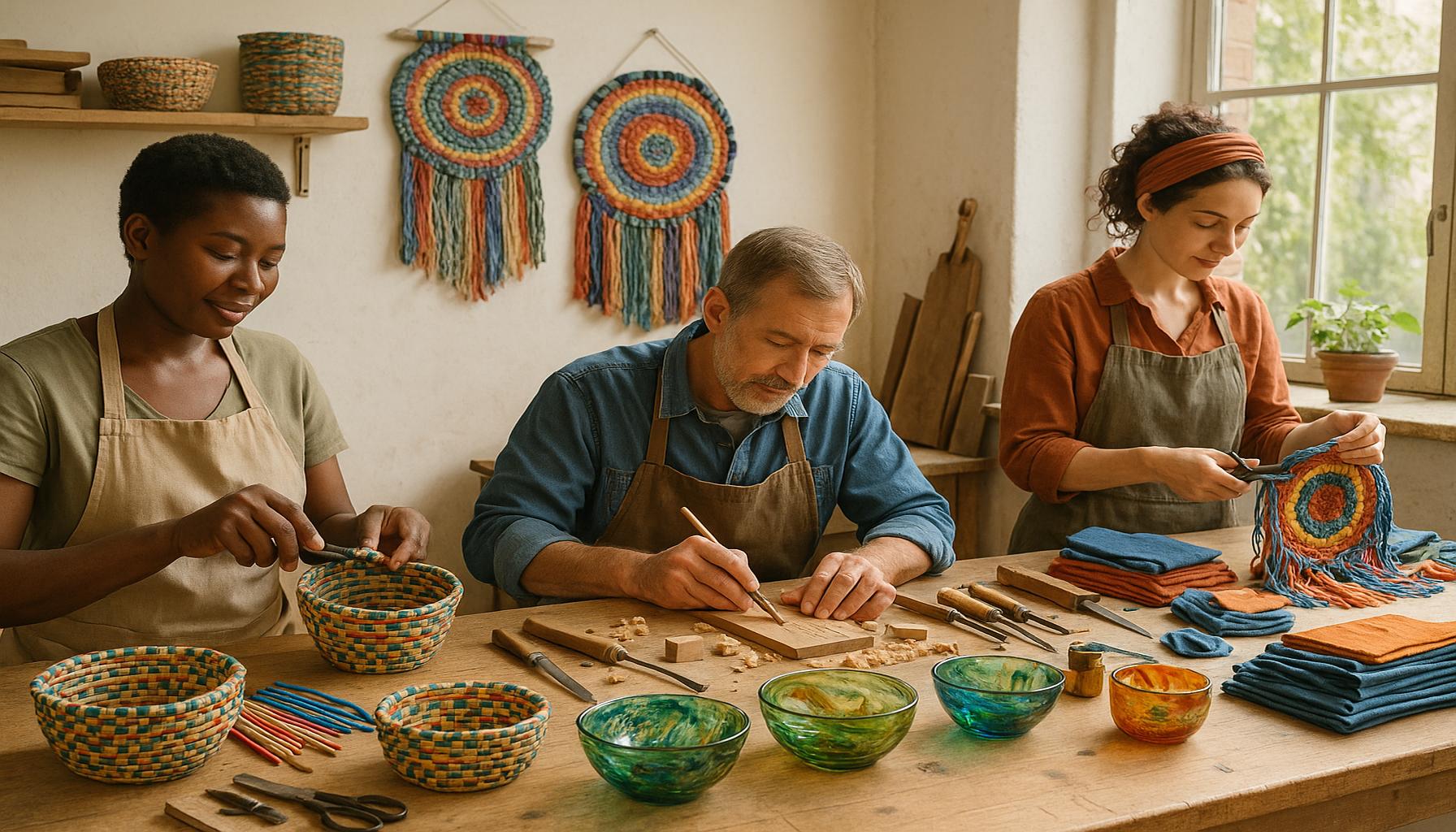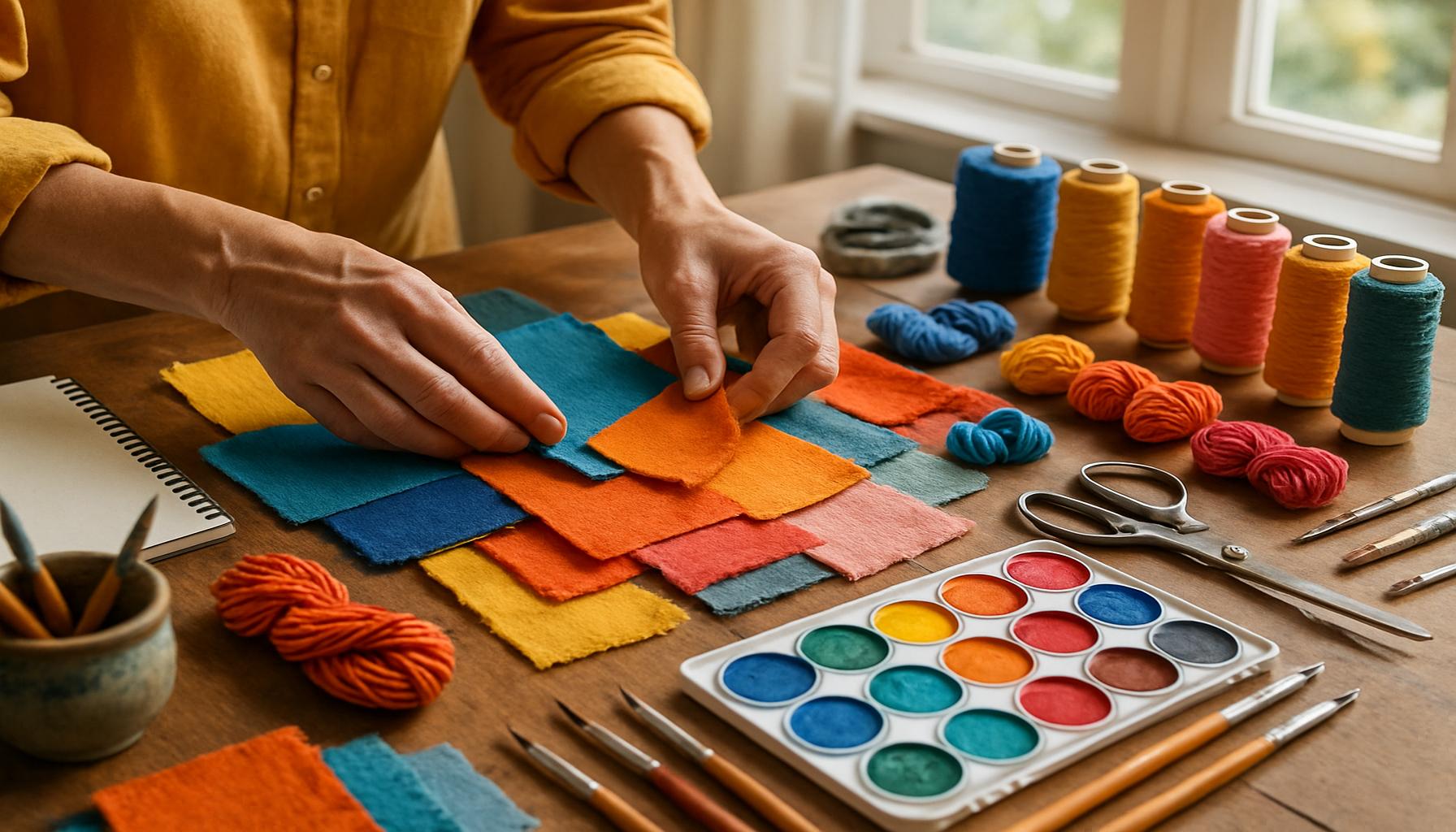Craft Techniques from Different Cultures: A Dive into Global Creative Diversity
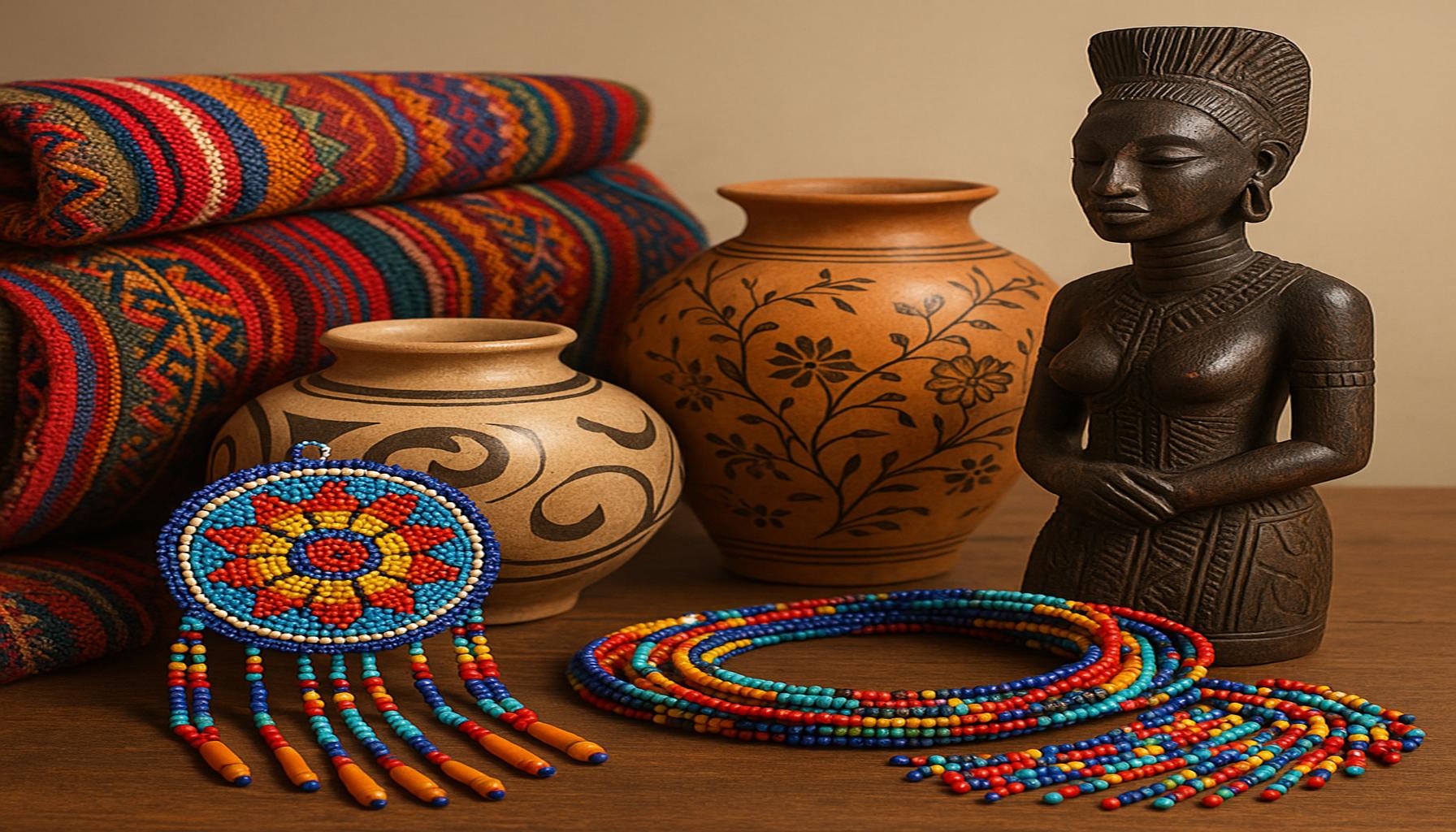
The Rich Fabric of Global Craft Techniques
Artisans around the world utilize unique craft techniques that reflect their cultural heritage. Each method tells a story, showcasing local materials and traditions that have been passed down through generations. From the vibrant colors of intricate textiles to the earthy tones of traditional pottery, these crafts hold significant meaning in their respective societies. They serve not only as artistic expressions but also as vital components of community identity.
Key Aspects of Global Craft Techniques
- Textiles: Techniques like weaving and dyeing can be found in cultures such as Navajo rug weaving, which involves complex patterns representing spiritual and natural symbols, or Japanese indigo dyeing, where artisans skillfully apply intricate designs to fabric, reflecting a deep appreciation for nature and tradition. For instance, the Indonesian Batik technique uses a wax-resist dyeing method to create stunning designs that narrate stories and cultural rituals.
- Pottery: Hand-building and firing methods vary widely, showcasing regional flavors in pieces like Mexican Talavera, renowned for its colorful, glazed earthenware, or Native American clay pottery, which combines functionality with artistic expression. For example, the Pueblo Indians of New Mexico create pots using a technique that involves coiling clay into spirals, resulting in unique, personalized works of art that often feature traditional motifs.
- Woodworking: Carving traditions can be found in places from Scandinavia to Africa, with each style embodying local environmental influences. Scandinavian craftsmen produce elegant wooden furniture using techniques that highlight the natural grain of the wood, while African artisans create intricate masks and sculptures that reflect ancestral stories and social messages. In the United States, the craft of Shaker furniture design is a notable example, emphasizing simplicity, functionality, and beauty through strict geometric forms.
Not only do these methods exist for aesthetic purposes, but they also serve functional roles in everyday life. For instance, textiles are often used for clothing, while pottery can be integral in cooking and storage. By examining these craft techniques, we gain insights into the communities that practice them, understanding their values, histories, and the interconnectedness of their art forms with their daily lives. This rich tapestry of creativity encourages us to appreciate not only the art but the culture behind it.
Why Dive Deeper?
Understanding global creative diversity enhances our appreciation for local artisans and their craftsmanship. This knowledge opens the door to new perspectives that can inspire our own creative endeavors. As we explore these techniques, we not only celebrate the unique stories they tell but also foster a deeper connection with the artisans behind the work. Each craft is a vibrant expression of identity, waiting to be explored and cherished. Join us on this journey as we celebrate the world’s craft techniques and the narratives that accompany them, enriching our understanding of global artistic heritage.
DISCOVER: Click here to unlock the secrets of creativity through music
Unveiling the Cultural Narratives in Craftsmanship
Craftsmanship is more than just a skill; it is a reflection of cultural identities and histories. Each craft technique embodies its community’s values, beliefs, and traditions, providing a window into various ways of life. By delving into the craft techniques from different cultures, we can uncover rich narratives that give context to the art forms we often admire. This exploration not only caters to the curiosity of those in the arts and crafts world but also enhances our understanding of global heritage.
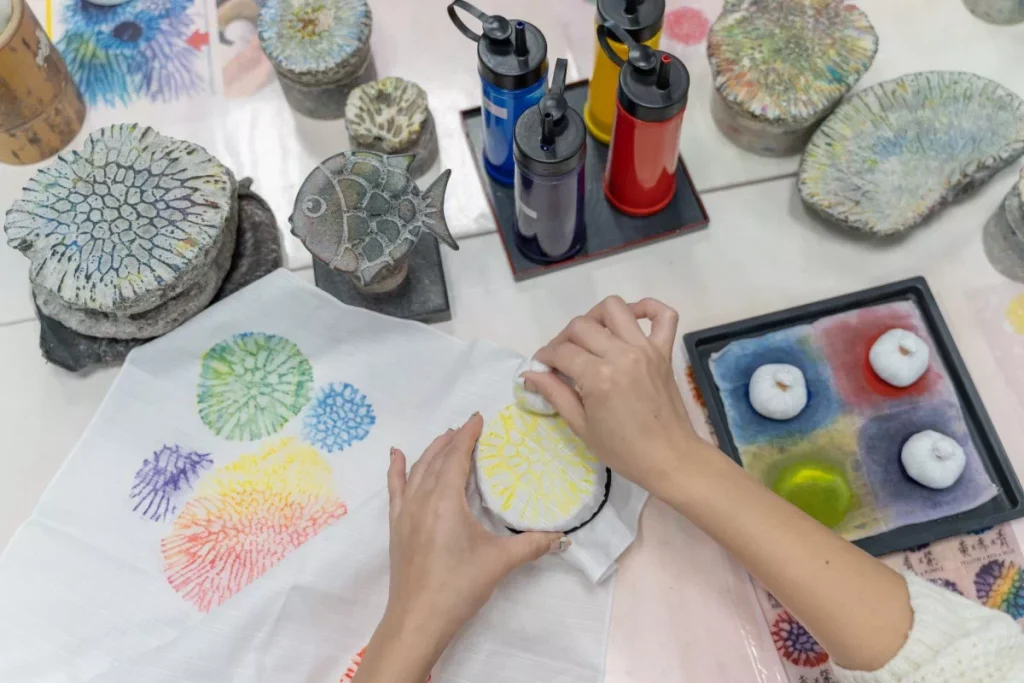
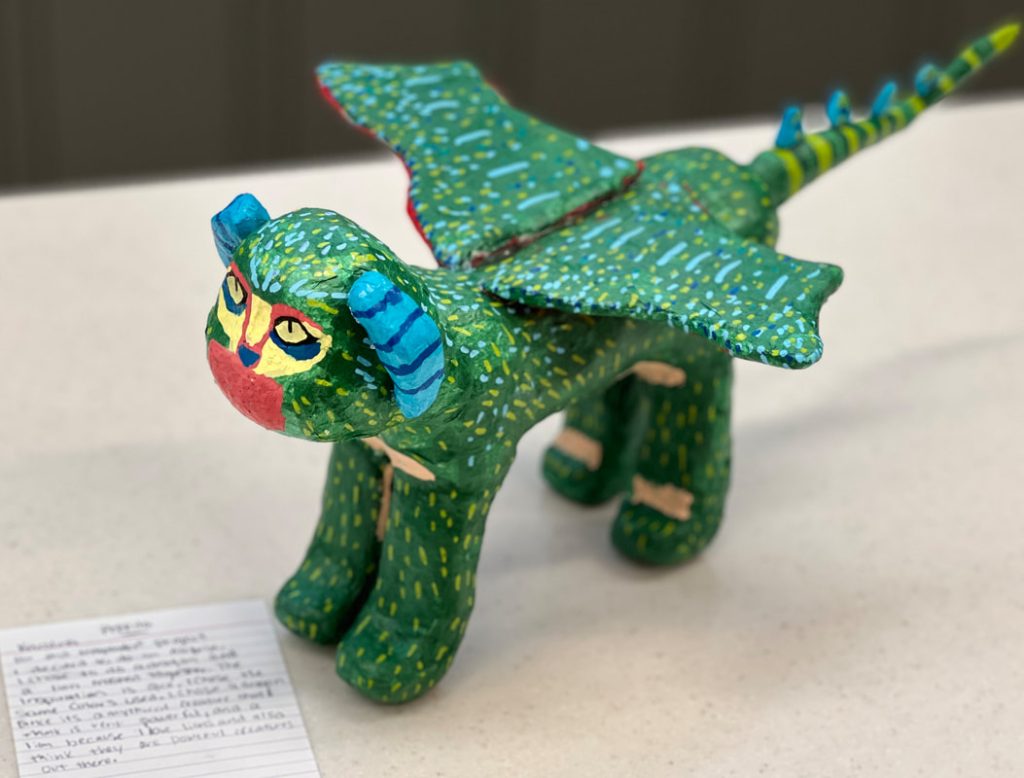
The Art of Weaving
Weaving, a fundamental technique in textile creation, showcases the interconnectedness between a community and its environment. For instance, the vibrant colors and geometric patterns found in Navajo rugs are not merely decorative; they encapsulate spiritual and environmental references that span centuries. These rugs are imbued with deep cultural significance, serving as symbols of identity and pride.
Meanwhile, the Japanese art of indigo dyeing, known as Shibori, employs a meticulous process that involves binding, folding, and twisting fabrics to create stunning designs. Originating in Japan during the 8th century, this technique focuses heavily on harmony with nature, often resulting in patterns that mimic natural elements, such as rain or waves. The earthy hues and intricate designs serve as a testament to the artisans’ commitment to their craft, bridging the gap between functionality and aesthetic beauty.
Distinctive Pottery Traditions
Pottery tells its own story, highlighting the relationship between clay, culture, and community. One fascinating example is Talavera pottery from Mexico, recognized for its vibrant glazes and intricate patterns that often depict flora, fauna, and historical events. The creation of these pieces requires specialized knowledge passed through generations, with each artisan contributing their unique touch. Talavera not only serves practical purposes in everyday life but also acts as a canvas for artistic expression, celebrating Mexican heritage.
In contrast, the Pueblo pottery of New Mexico utilizes traditional techniques to craft functional yet beautiful pieces. The Pueblo artisans, such as those from the San Ildefonso and Acoma tribes, often employ a coiling method that allows for personalized designs featuring traditional motifs. These pottery pieces are not solely utilitarian; they embody the cultural narratives of their creators, making them cherished items that resonate with both history and identity.
Exploring Woodworking Artisanship
Woodworking offers another captivating glimpse into cultural craftsmanship. Scandinavian furniture design is renowned for its minimalistic elegance, where skilled artisans often utilize locally sourced wood, celebrating its natural grain and texture. Shaker furniture, in particular, exemplifies this approach, emphasizing functional simplicity and clean lines—principles that resonate with the Shaker philosophy of utility in beauty.
In contrast, the intricate wood carvings from regions in Africa portray various patterns and forms that reflect cultural stories, beliefs, and social messages. Masks, sculptures, and everyday items become vessels of communication that link generations, maintaining a profound connection to ancestral traditions.
Engaging with the diverse world of craft techniques exposes the rich cultural stories woven into each art form. As we continue to explore global creative diversity, we uncover the values, traditions, and shared human experiences that enrich our understanding of artistry and craftsmanship.
Exploring Global Craft Techniques
Craft techniques reflect the cultural heritage and creativity of various communities around the world. These time-honored practices not only create beautiful objects but also tell powerful stories. Each culture brings distinctive characteristics to their crafts, revealing how local traditions and resources shape artistic expressions. For instance, in Japan, the art of origami transforms simple paper into intricate designs, emphasizing patience and precision. In contrast, the vibrant textiles of Peru, characterized by their bold colors and patterns, represent a rich history of Andean culture and community collaboration.The use of natural materials also plays a crucial role in global crafting techniques. Indigenous tribes often utilize locally sourced resources, promoting sustainability and a connection to their environment. In Africa, for example, the process of beadwork transcends mere decoration, often conveying significant societal meanings and individual tales. This approach can lead to unique pieces that embody the spirit of unity among artisans while celebrating the distinctiveness of each craft.To delve deeper into this topic, one might explore how globalization affects traditional crafting techniques. While exposure to new styles and markets can foster innovation, it risks overshadowing local practices. Therefore, it becomes essential to appreciate, preserve, and promote these craft techniques that define cultural identities. Engaging with historical contexts as well as modern adaptations of crafts further enriches our understanding of global creative diversity.
| Category 1 | Category 2 |
|---|---|
| Artisan Techniques | Traditional methods passed down through generations |
| Community Influence | Collaborative efforts that strengthen cultural ties |
These aspects not only enhance our appreciation for crafts but also inspire a greater understanding of the diverse world we inhabit. Embracing these unique techniques can lead to innovative practices while safeguarding the richness of cultural expressions.
DIVE DEEPER: Click here to learn how creativity can ease your stress
Cultural Inspirations in Crafting: Beyond Utility to Art
The world of crafts also extends into the realms of paper arts and metalwork, where cultural influences flourish. Through these intricate techniques, artisans express not only their creativity but also rich heritage and community storytelling.
The Timeless Craft of Paper-Making
Paper arts, particularly in Asia, reveal a unique interplay between craftsmanship and cultural significance. Japanese Washi, a traditional paper-making technique, is a beautiful embodiment of nature’s elements, as this handmade paper is derived from the fibers of the mulberry tree. The process is labor-intensive, often involving several stages of refinement to achieve its signature texture and durability. Washi is not merely a medium; it is woven deep into the tapestry of Japanese art, utilized in calligraphy, origami, and crafts like Shōji—sliding doors that harmonize interiors with natural landscapes.
Similarly, Chinese Xuan paper has held cultural significance for over a thousand years, often preferred by scholars for traditional brush painting and calligraphy. The distinctive texture of Xuan paper allows for precise ink absorption, enhancing the aesthetics of each brush stroke and bridging the gap between written language and visual artistry. These paper techniques showcase a delicate balance of function and form, underscoring the cultural philosophies that cherish contemplative artistry.
The Allure of Metalwork
Metalworking is yet another craft technique where cultural narratives shine. In the African continent, the art of lost-wax casting, as demonstrated in the bronze sculptures of the Benin Kingdom, showcases not just technical skill, but profound historical value. These meticulously crafted pieces often represent kings, warriors, and significant events, serving as both artistic items and historical records that narrate the rise and fall of dynasties.
Furthermore, the traditions of Indian metalwork highlight another dimension of artisanal craftsmanship. Utilizing copper, brass, and other metals, artisans from regions like Rajasthan engage in intricate engraving and etching, often depicting folklore, celestial patterns, and vibrant motifs. Items like traditional brass vessels not only fulfill utilitarian purposes but also embody a continuum of cultural storytelling—from the craftsmanship of their creation to their significance in daily life.
Embracing Natural Elements in Craft
Craft techniques often rely heavily on locally available materials, creating a symbiotic relationship between craftsmanship and the environment. The New Zealand indigenous Maori, for instance, practice carving wood and bone to create intricate sculptures and tools, a craft deeply rooted in their mythology and traditions. The ornate designs often feature elements of nature and tribal symbols, acting as repositories of cultural knowledge that can be passed down through generations.
Moreover, the utilization of natural dyes in crafts across various cultures sheds light on sustainable practices. In regions like the Andes, artisans have long employed native plants and minerals to create vibrant textiles. The Peruvian textile arts use this method not just for clothing but also as a way to reflect local identities and stories. The vibrant colors resonate with the natural landscapes, encapsulating a sense of place and belonging that is intimately tied to the natural environment.
As we navigate through the extensive array of craft techniques across cultures, we encounter a diverse portrayal of human experience, artistic expression, and the embrace of local traditions. The stories told through these crafts breathe life into cultural heritage while simultaneously encouraging a connection among communities, transcending geographical boundaries and time itself.
DIVE DEEPER: Click here to discover the evolution of digital art
Conclusion: Celebrating Global Craftsmanship
As we explore the myriad craft techniques from different cultures, we unearth not only the skill and artistry inherent in each method but also the profound cultural narratives that shape them. From the elegant fibers of Japanese Washi paper to the intricate metalwork of India and the vibrant textiles of the Andes, each craft serves as a testament to the ingenuity of human expression. These techniques stand as bridges connecting communities, fostering a sense of identity and continuity through shared artistic practices.
Moreover, the relationship between artisans and their environments—whether through natural dyeing methods or locally sourced materials—highlights a commitment to sustainability that is crucial in today’s world. As these crafts evolve and adapt to modern contexts, they also remind us of the historical roots and cultural significances that are often intertwined with our daily lives.
In a rapidly globalizing world, immersing ourselves in the craft traditions from around the globe not only enhances our appreciation for different ways of life but also encourages the preservation of unique artistic legacies. The beauty of these crafts lies in their ability to tell stories that resonate across borders, inviting us to celebrate our shared humanity. As we continue to honor and promote these diverse practices, we pave the way for a future enriched by cultural exchanges and collective creativity.
